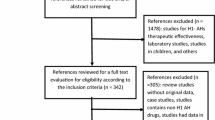Abstract
Background
Montelukast (Singulair) is a selective leukotriene receptor antagonist (LTRA) indicated for the maintenance treatment of asthma. Currently, there are limited prospective, comparative studies in the literature examining the safety of montelukast use in pregnancy.
Objectives
The primary objective of this study was to determine whether exposure to montelukast during pregnancy increases the rate of major malformations above the 1–3% baseline risk or the rate of other adverse effects.
Methods
Pregnant women taking montelukast were enrolled in the study from six teratogen information services around the world. These women were compared to two other groups of women: (1) disease-matched, who used inhalers for a similar indication and (2) women not diagnosed with asthma and not exposed to any known teratogens. The primary outcome was major malformations and secondary endpoints included spontaneous abortion, fetal distress, gestational age at birth and birth weight.
Results
Out of 180 montelukast-exposed pregnancies, there were 160 live births including three sets of twins, 20 spontaneous abortions, 2 elective abortions and 1 major malformation reported. The mean birth weight was lower (3,214 ± 685 g) compared to controls [3,356 ± 657 (disease-matched) and 3,424 ± 551 (exposed to non-teratogens), P = 0.038] and the gestational age was shorter [37.8 ± 3.1 weeks (montelukast) and 37.6 ± 4.4 (disease-matched) versus 39.3 ± 2.4 weeks (exposed to non-teratogens), P = 0.045]. About 25% of the newborns had fetal distress, a higher rate than controls (P = 0.007). However, upon sub-analysis of women who continued the drug until delivery, only birth-weight difference (304 g) remained significant.
Conclusions
Montelukast does not appear to increase the baseline rate of major malformations. The lower birth weight in both asthma groups is most likely associated with the severity of the maternal condition.
Similar content being viewed by others
References
Dombrowski MP (2004) Asthma during pregnancy. Am Coll Obstet Gynecol 103:5–12
Kwon HL, Triche EW, Belanger K, Bracken MB (2006) The epidemiology of asthma during pregnancy: prevalence, diagnosis, and symptoms. Immunol Allergy Clin North Am 26:29–62
Frezzo T, McMahon CL, Pergament E (2002) Asthma and pregnancy. IL Teratogen Inf Serv 9(2):1–5
Källén B, Rydhstroem H, Aberg A (2000) Asthma during pregnancy – a population based study. Eur J Epidem 16:167–171
Tamási L, Somoskövi A, Müller V, Bártfai Z, Acs N, Puhó E, Czeizel AE (2006) A population-based case-control study on the effect of bronchial asthma during pregnancy for congenital abnormalities of the offspring. J Asthma 43(1):81–86
Murphy VE, Clifton VL, Gibson PG (2006) Asthma exacerbations during pregnancy: incidence and association with adverse pregnancy outcomes. Thorax 61:169–176
Alexander S, Dodds L, Armson BA (1998) Perinatal outcomes in women with asthma during pregnancy. Obstet Gynecol 92:435–440
Källén B, Otterblad Olausson P (2007) Use of anti-asthmatic drugs during pregnancy. 2. Infant characteristics excluding congenital malformations. Eur J Clin Pharm 63(4):375–381
Demissie K, Breckenridge MB, Rhoads GG (1998) Infant and maternal outcomes in the pregnancies of asthmatic women. Am J Respir Crit Care Med 158:1091–1095
Sheiner E, Mazor M, Levy A, Wiznitzer A, Bashiri A (2005) Pregnancy outcome of asthmatic patients: a population-based study. J Matern Fetal Neonatal Med 18:237–240
Acs N, Puho E, Banhidy F, Czeizel AE (2005) Association between bronchial asthma in pregnancy and shorter gestational age in a population-based study. J Matern Fetal Neonatal Med 18:107–112
Jana N, Vasishta K, Saha SC, Khunnu B (1995) Effect of bronchial asthma on the course of pregnancy, labour and perinatal outcome. J Obstet Gynaecol 21:227–232
Tan KS, Thomson NC (2000) Asthma in pregnancy. Am J Med 109:727–733
Merck Research Laboratories (2006) Seventh annual report on exposure during pregnancy from the Merck Pregnancy Registry for SINGULAIR (montelukast sodium) covering the period from U.S. approval (February 20, 1998) through May 22, 2006. Merck Research Labs, West Point, PA. www.merckpregnancyregistries.com
Gluck JC, Gluck PA (2005) Asthma controller therapy during pregnancy. Am J Obstet Gynecol 192(2):369–380
Spector SL for the Anti-leukotriene Working Group (2001) Safety of anti-leukotriene agents in asthma management. Ann Allergy Asthma Immunol 86:18–22
American College of Obstetricians and Gynecologists and the American College of Allergy, Asthma and Immunology (2000) Position statement: the use of newer asthma and allergy medications during pregnancy. Ann Allergy Asthma Immunol 84:475–480
Bakhireva LN, Jones KL, Schatz M, Klonoff-Cohen HS, Johnson D, Slymen DJ, Chambers CD (2007) Safety of leukotriene receptor antagonists in pregnancy. J Aller Clin Immunol 119(3):618–625
Källén B, Otterblad Olausson P (2007) Use of anti-asthmatic drugs during pregnancy. 3. Congenital malformations in the infant. Eur J Clin Pharm 63(4):383–388
Finer LB, Henshaw SK (2006) Disparities in rates of unintended pregnancies in the United States. Perspect Sex Reprod Health 38(2):90–96
Einarson A, Pistelli A, DeSantis M, Malm H, Paulus WD, Panchaud A, Kennedy D, Einarson TR, Koren G (2008) Evaluation of the risk of congenital cardiovascular defects associated with use of paroxetine during pregnancy. Am J Psychiatry 165(6):749–752
Holmes LB (1999) Need for inclusion and exclusion criteria for the structural abnormalities recorded in children born from exposed pregnancies. Teratology 59(1):1–2
Freedman B, Koren G (2002) Reliability of maternal reporting in identifying major congenital malformations. Vet Hum Toxicol 44(3):180–181
Bakhireva LN, Schatz M, Jones KL, Chambers CD (2008) Asthma control during pregnancy and the risk of preterm delivery or impaired fetal growth. Ann Allergy Asthma Immunol 101:137–143
Ziegler A (2005) Asthma management during pregnancy. J Arkan Med Soc 102(1):20–24
Schatz M, Dombrowski MP, Wise R, Thom EA, Landon M, Mabie W et al (2003) Asthma morbidity during pregnancy can be predicted by severity classification. J Aller Clin Immunol 112:283–288
Author information
Authors and Affiliations
Corresponding author
Additional information
All the authors guarantee that this is original work, has not been previously published and is not currently under review at another journal. Each has approved the submission of this manuscript to European Journal of Clinical Pharmacology.
Rights and permissions
About this article
Cite this article
Sarkar, M., Koren, G., Kalra, S. et al. Montelukast use during pregnancy: a multicentre, prospective, comparative study of infant outcomes. Eur J Clin Pharmacol 65, 1259–1264 (2009). https://doi.org/10.1007/s00228-009-0713-9
Received:
Accepted:
Published:
Issue Date:
DOI: https://doi.org/10.1007/s00228-009-0713-9




